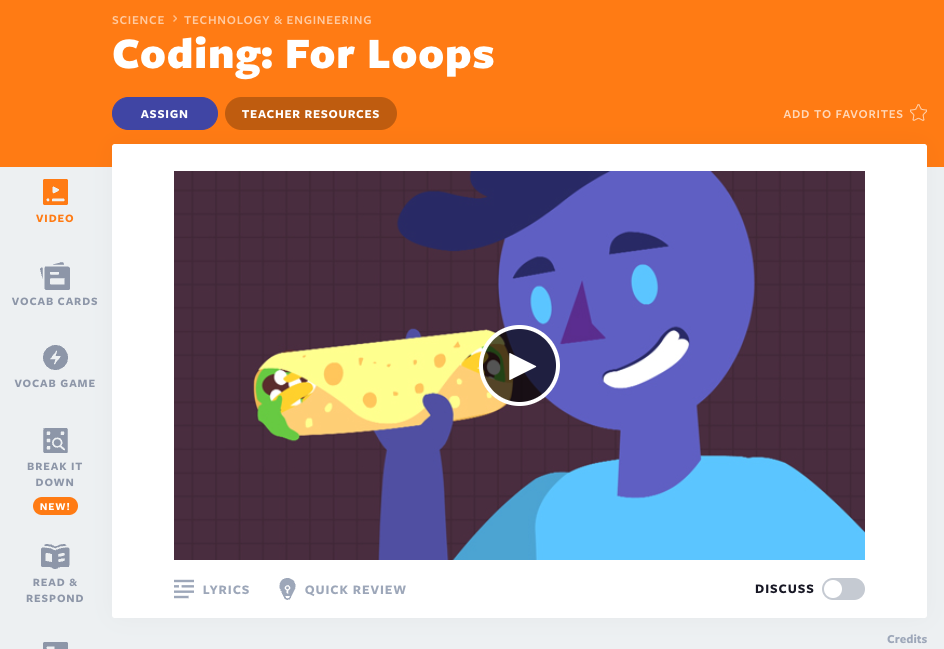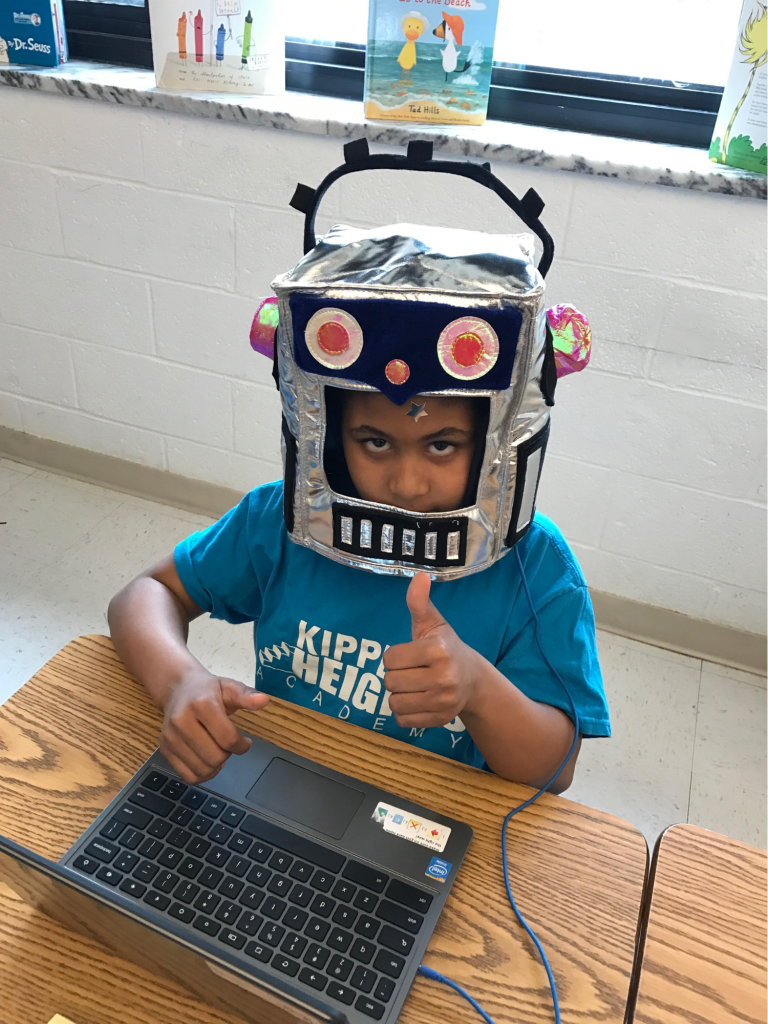
How to enhance your elementary STEM curriculum
I have the privilege of teaching students about the STEM curriculum (science, technology, engineering, and math) at my school. I specifically teach technology. Generally, they’re fans of it. There’s definitely more than one hopeful future TikTok engineer in the midst.
However, sometimes even tech class isn’t a basket full of puppies in terms of student engagement. As a first grader innocently asked earlier this year, “But Mr. Mishleau, where’s the fun tech stuff?” So I realized that it was time to turn the spiciness level up and pull out all the engagement stops! Keep reading to explore strategies I use to create impactful learning experiences and get students excited about STEM.
Here’s a mashup of some of the science videos Flocabulary has to offer!
New to Flocabulary? Teachers can sign up for a trial to access our lesson videos and assessment activities. Administrators can get in touch with us to learn more about unlocking the full power of Flocabulary through Flocabulary Plus.
How can I teach STEM curriculum to elementary students?
STEM curriculum can be worked into your daily teaching in multiple ways, such as computer science lessons, digital literacy, and more. One way to dedicate time to teaching STEM is by participating in Computer Science Education Week! This is an international event with the mission of teaching students about computer science. Every year, people around the globe participate in an Hour of Code, where they engage in various coding and STEM activities for elementary. You can use Flocabulary’s Computer Science Education Week (CSED Week) coding lessons to plan an Hour of Code.
5 Ways to enhance your elementary STEM curriculum
1. Use academic hip-hop videos from Flocabulary
One of the most powerful tools I’ve leveraged in my classroom for engaging kids in rigorous content has been Flocabulary’s suite of tools and resources for STEM! Each technology class has a Tech Video of the Day, which transitions from our beginning of class procedures (“First 5”) into our lesson.

Coding for Loops is one of my favorite lessons; it makes repeat loops in computer programming much more “sticky” and fun.
As independent formative assessments, I utilize the Quiz and Lyric Lab in the Computer Programming lesson to challenge students to write their own rhymes. Students love the opportunity to be creative, and I appreciate seeing how deeply they internalize the content we learn and their interest in real-world applications.
2. Excite students with computer science or robot-themed props

It’s hard to be grumpy when you are wearing a robot hat. These hats have been a super popular incentive in my class.
Students know that I might plop a little robot hat on their heads when they work hard, showing persistence and self-calming.
They yell out, “It’s robot time!” when I place the hat on one of their peers. These awesome hats are available on Amazon and tie nicely to much of the content we learn.
Another tried-and-true product to the tune of $9.99? Mini-microphones. Students know they aren’t real, but that doesn’t keep 1st or 4th graders from shouting out loud and proud when I hold it up to them or pass it around when we’re reading from the board! It’s also fun to use with students when they create raps using Flocabulary’s Lyric Lab activity.
It’s a much more effective and fun way to ensure students internalize the material we are talking about and ensure that I hear every student’s voice.
3. Establish classroom routines for STEM time
Building class routines is essential for students, especially when teaching STEM curriculum to elementary classrooms. Anyone who teaches from a cart will tell you that #CartLife can be hard! However, I’ve actually found it sometimes easier than having my own classroom (shhh, don’t tell anyone!). One reason is that my cart is stacked with the things I might need, such as pillows!
Okay, more like circular padded mats. But to kids, they are luxurious pillows that you must earn in class. They fit neatly into a few cart drawers, making technology class feel like an extra-special, different time. I mean…do you get to activate pillow mode in math class? Nope.
I build on to the excitement by having students chant “Pillow mode, activate!” before giving any out. It reminds kids that it’s time for technology class and that it’s going to be a fun one!
Mr. Mishleau’s tricked-out tech cart always includes:
- Timers for friends who need scaffolding to build work stamina
- Pillows, robot hats, and microphones
- Tech books for power outages and student work to give feedback on
- Clorox wipes for sticky desks
- Pens for days
4. Leverage social media, such as Twitter
Traditions and routines have made my classroom a much happier and more predictable space for kids. One of those traditions is the Tweeter of the Day. A student writes a Tweet to share in every tech class via our school’s Twitter account. I use the class roster to ensure all students can Tweet their hearts out.
5. Communication is key
So much of teaching in any subject is communicating to students:
- I love you!
- This is important!
- You can accomplish whatever you put your mind to.
I think STEM challenges and joy in the elementary classroom are paramount to conveying these messages. Some of the tools mentioned are definitely (intentionally!) a little silly, but they all drive at making students feel welcomed, and seen, and making them think and talk about the technology content we are learning.
Started using Flocabulary for your STEM curriculum
We hope these tips will help drive classroom engagement, culture, and achievement in your STEM education. Incorporating engaging STEM projects and activities for elementary students is a great way to spark curiosity and build foundational skills in STEM fields. By focusing on hands-on learning and problem-solving, STEM teachers can prepare students for success in the 21st century while fostering a love for science, technology, engineering, and math. Flocabulary has engaging hip-hop standards-aligned videos and lessons you can use for all K-12 Subjects. If you’d like to access the lessons mentioned here and more, sign up below!
New to Flocabulary? Teachers can sign up for a trial to access our lesson videos and assessment activities. Administrators can get in touch with us to learn more about unlocking the full power of Flocabulary through Flocabulary Plus.
